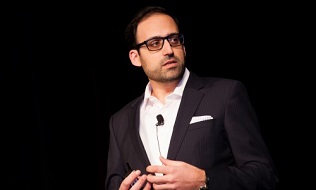

The old saying about an ounce of prevention being worth a pound of cure works just as well when it comes to cancer care as it does for any other medical ailment, if you ask Dr. Jeffrey Rothenstein.
The medical oncologist at the R.S. McLaughlin Durham Regional Cancer Centre told the audience at Benefits Canada’s 2017 Employer Cancer Care Summit in February that the subject often gets less attention in the complex world of cancer medicine.
“It can be so much more interesting to talk about new drugs and how expensive they are, but prevention is the elephant in the room,” said Rothenstein. “You can win a lot with prevention, so don’t forget about that.”
Read: Immuno-oncology shows promise but cost concerns loom
Rothenstein encouraged people to get creative in their attempts at halting cancer rates, noting that some of the most provocative recent results for smoking cessation came from an unusual approach to the issue.
He quoted a recent study that found a combination of traditional techniques to help people kick the habit, including counselling sessions and a course of prescribed medication, resulted in a six per cent success rate over six months.
The researchers compared that baseline with a simple commitment to pay another group smokers $800 if they could get through six months without lighting up and found the promise of cash was almost three time as effective. The result was a success rate of 16 per cent.
Read: An employee’s experience with the workplace during cancer treatment
“It sounds like a big investment, because you’re paying all these people to quit smoking. But probably a lot of you in the room know a lot better than I do that employing a smoker costs about $5,000 a year more than employing a non-smoker. Think about It from a global perspective, and it starts to make sense,” said Rothenstein. “Smoking cessation is probably the best thing we can do for our patients and for your employees, in terms of improving their health and wellness.”
Rothenstein said inventive thinking has also helped in the development of game-changing drugs to fight lung cancer over the last decade. By focusing on the small number of success cases in various drug trials, he said researchers were able to identify different strains of the disease and the drugs that worked most effectively against them. That means physicians can now individually target treatment based on the specific type of lung cancer a patient has.
Read: Exclusive research results: How do employees with cancer feel about their benefit plans?
“When I treat the right patient with the right drug, all of a sudden, the options change. It makes a huge difference in survival rates,” said Rothenstein. “If we want to get the best outcomes for our patients in terms of health and wellness and productivity, we have to think about solutions that are outside of the box.”
